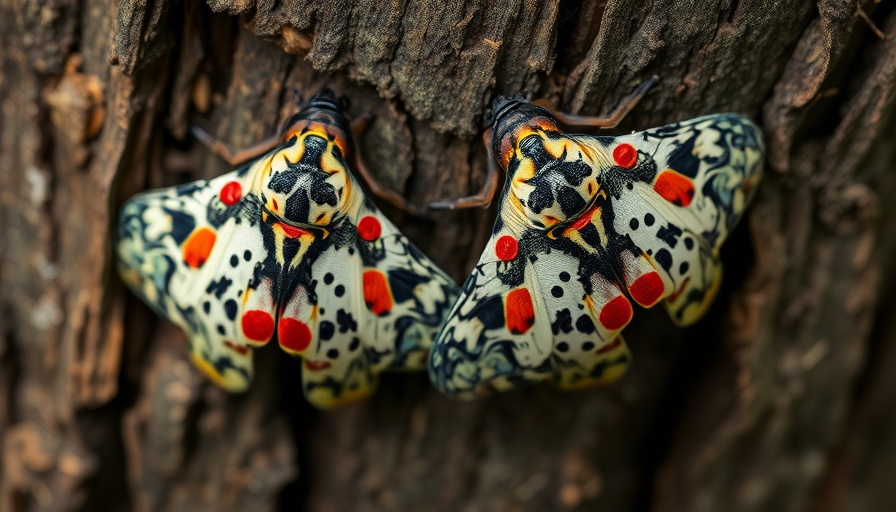
Understanding the Spotted Lanternfly: A Growing Concern
Known for their striking beauty, spotted lanternflies (SLF) have become a significant threat since their introduction to the U.S. a decade ago. With a chunky appearance, their black head and gray speckled forewings, along with vibrant red hindwings, are stunning but deceptive. As they rapidly spread across the country, homeowners need to remain vigilant.
How Invasive Species Impact Local Ecosystems
The spotted lanternfly is not just a nuisance; it poses severe risks to agriculture and native flora. Originally hailing from regions in China and Vietnam, these pests have few natural predators in their new environment, allowing them to flourish aggressively. As entomologist Joe Malinowski states, despite quarantine measures in several Northeastern states, these insects continue to spread rapidly.
The Economic Fallout for Farmers
Farmers are feeling the devastating effects of this invasive species. SLFs particularly target hardwood trees and several fruit crops, including grapes and apples. In a state like California, known for its fertile lands and vibrant agricultural output, the economic implications of an SLF infestation could be severe. The fear is that if SLFs penetrate deeper into the West Coast, they could harm the agricultural community significantly.
Identifying the Spotted Lanternfly Life Cycle
A crucial aspect of managing these pests is understanding their life cycle. The SLF undergoes several stages, from eggs that resemble mud blobs to nymphs that are bright red with black dots, and finally to the adult stage. Early spring is when eggs begin to hatch. Ohio’s Department of Agriculture has already quarantined several counties to mitigate their spread. Homeowners can play a key role by learning to identify these stages and reporting sightings.
What You Can Do to Help
Every individual can contribute to controlling the spread of spotted lanternflies. Here are a few actions you can take:
- Be Vigilant: Regularly inspect your properties for any signs of SLF.
- Squash and Report: If you spot one, do not hesitate to squish them and report your findings to local authorities.
- Learn Identification: Familiarize yourself with their physical characteristics at all life stages.
Neighborhood associations can collaborate to raise awareness about this pest, hosting educational sessions on identification and control methods.
Local vs Global Perspectives: The Bigger Picture
This issue is not confined to the U.S. alone. Many countries are grappling with how to manage the threats posed by invasive species. Globally, efforts in ecological balance are continually challenged by these newcomers that disrupt local ecosystems. Homeowners in California must consider their role not just locally, but as part of a broader environmental concern, emphasizing proactive measures in and around their homes.
Future Predictions: What Lies Ahead
As climate change continues to influence ecosystems worldwide, pest populations may adapt, potentially expanding their habitats. Entomologists expect that their range will continue to grow. As such, California residents need to stay informed, as SLFs may soon appear in your neighborhoods if trends continue.
Conclusion: Why Your Action Matters
Spotted lanternflies are a growing worry for Californians and anyone who values local agriculture. Their rapid spread represents a threat not just to crops but to the delicate balance of our ecosystems. Taking proactive steps—like learning to identify them, reporting sightings, and contributing to local awareness efforts—can make a significant difference in controlling this invasion. As homeowners, community members, and concerned citizens, we must unite to mitigate the damage and protect our environment.
 Add Row
Add Row  Add
Add 




Write A Comment